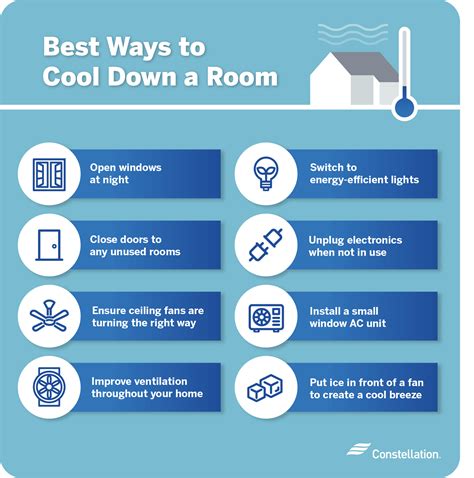The Most Effective Ways to Cool Your Home
Summer heat can be unbearable, turning your home into a stifling oven. Staying cool and comfortable doesn't have to mean running up a massive energy bill, though. This comprehensive guide explores the most effective ways to cool your home, balancing energy efficiency with comfort. We'll cover strategies for both short-term relief and long-term solutions, ensuring you can beat the heat without breaking the bank.
Understanding Your Home's Heat Gain
Before diving into cooling solutions, it's crucial to understand how heat enters your home. This will help you target your efforts effectively. Key sources of heat gain include:
- Sunlight: Direct sunlight is a major contributor. South-facing windows are particularly problematic.
- Exterior Walls and Roofs: These surfaces absorb heat throughout the day and radiate it indoors.
- Appliances and Electronics: Running appliances and electronics generate heat.
- Infiltration: Air leaks around windows, doors, and other openings allow hot outside air to enter.
By understanding these sources, you can implement targeted strategies to minimize heat gain and maximize cooling efficiency.
How Can I Quickly Cool Down My Home?
This is a common question, and the answer lies in a combination of quick fixes:
1. Utilizing Fans Strategically:
Ceiling fans are your first line of defense. Make sure they're running counter-clockwise (to create a downward airflow) to push cooler air down. Consider using portable fans to circulate air in specific areas. Place a bowl of ice water in front of a fan to create a makeshift evaporative cooler.
2. Closing Curtains and Blinds:
Blocking direct sunlight is crucial. Close curtains, blinds, or shades during the hottest parts of the day, particularly on windows facing the sun. Consider using blackout curtains for maximum effectiveness.
3. Strategic Ventilation:
Open windows strategically at night when the outside air is cooler, allowing for cross-ventilation. Close them during the day to keep the hot air out.
4. Minimize Heat-Generating Appliances:
Avoid using heat-generating appliances like ovens and dryers during the hottest parts of the day. Turn off unnecessary lights and electronics.
What are the Most Effective Long-Term Cooling Solutions?
For sustained comfort and energy savings, consider these long-term solutions:
1. Insulation and Air Sealing:
Proper insulation in your attic, walls, and floors significantly reduces heat transfer. Air sealing, which involves sealing cracks and gaps around windows, doors, and other openings, prevents hot air from entering.
2. Energy-Efficient Windows:
Windows are a major source of heat gain. Investing in energy-efficient windows with low-E coatings and gas fills dramatically reduces heat transfer.
3. Installing a Programmable Thermostat:
A programmable thermostat allows you to automatically adjust your home's temperature based on your schedule, saving energy when you're away or asleep. Consider a smart thermostat for even greater control and energy optimization.
4. Regular HVAC Maintenance:
Regular maintenance of your HVAC system ensures it operates efficiently. Change air filters regularly, and schedule professional maintenance to check for leaks and other issues.
5. Consider a whole-house fan:
Whole-house fans can draw hot air out of your attic and replace it with cooler outside air during cooler evening hours.
What are the Best Ways to Cool a Room Without AC?
Even without central air conditioning, you can keep your rooms cool. Here are some effective strategies:
1. Evaporative Cooling:
Evaporative coolers (swamp coolers) are effective in dry climates. They work by evaporating water, which cools the air.
2. Cross Ventilation:
Strategic placement of fans and opening windows can create a cooling breeze.
3. Using Lightweight Curtains and Blinds:
These materials reflect sunlight and reduce heat absorption.
4. Choosing the Right Flooring:
Cool flooring materials, like tile or hardwood, can help keep rooms cooler.
How Can I Reduce My Energy Bill While Keeping My Home Cool?
Reducing your energy bill while maintaining a comfortable temperature involves a combination of strategies:
- Conserve energy during peak hours: Shift energy-intensive tasks to off-peak times.
- Utilize natural cooling: Take advantage of breezes and shade to reduce reliance on air conditioning.
- Regular maintenance: Keep your HVAC system in top shape to maximize efficiency.
- Smart thermostat: Optimize energy usage through automated temperature control.
By combining these strategies, you can enjoy a cool and comfortable home while significantly reducing your energy consumption and bills.
This guide provides a comprehensive overview of effective cooling strategies. Remember, a combination of short-term and long-term solutions will yield the best results, creating a comfortable and energy-efficient home throughout the summer months.

